This guide covers the entire SEO checklist required for better search engine ranks in 2024 and other topics like link development, local SEO, technical SEO audits, and content optimization. This comprehensive overview contains all the helpful advice you need to prepare your website for search success the following year.
Getting organic traffic to websites requires search engine optimization or SEO. Now that 2023 is almost over, website owners should start organizing their Complete SEO Checklist for 2024. Although optimizing your website for search engines should be a continuous effort, a new year offers an opportunity to revamp your SEO plan completely.
Utilizing the most recent and efficient techniques in The Complete SEO Checklist for 2024, you can take advantage of Google’s algorithm changes to significantly increase your search visibility. This tutorial will walk you step-by-step through exactly what you need to do to increase your link profiles, technological foundations, content performance, and local search rankings.
Research, resources, and comprehension are necessary for ongoing improvement when incorporating SEO best practices into your website and content marketing. An SEO checklist offers a systematic technique to increase your site’s authority in search engine results pages (SERPs) instead of irregular, piecemeal adjustments.
Everything necessary must be in place if you want to see success with SEO. If you do, ranking for your website can be easy. Although these are fundamental SEO tasks, the following advice serves as an effective SEO strategy.
1. Launch Google Search Console
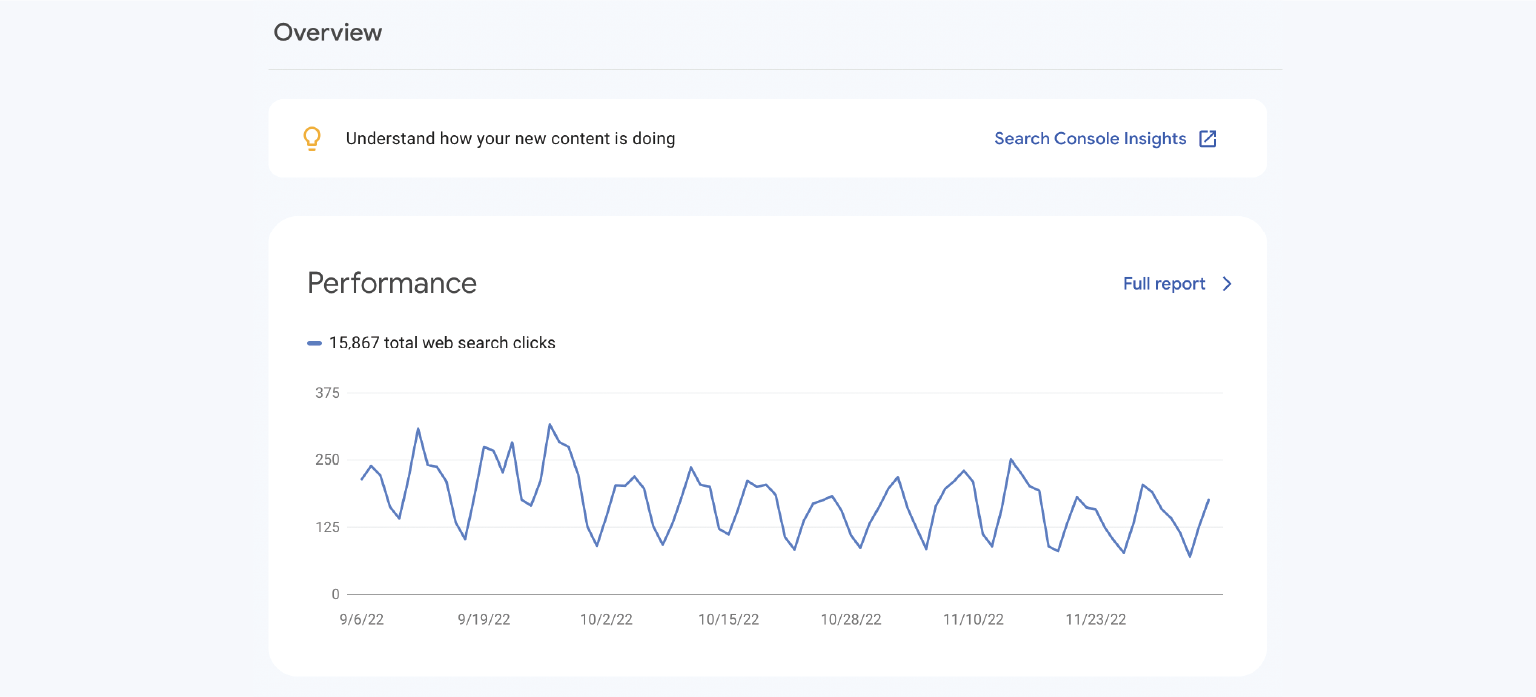
With the help of Google Search Console (GSC), you can track, manage, and debug your website’s performance in Google search results. It’s among the greatest resources for learning more about how Google views your website.
2. Launch the Bing Webmaster Tool

Meanwhile, the comparable tool is Bing Webmaster Tools. Regarding the Bing search engine, these two tools can help you uncover crawl issues, see the keywords people use to reach your website, and much more. It is strongly advised that you set these up if you haven’t already.
3. Set Up Google Analytics
A free online (and app) analytics tool is Google Analytics. It facilitates monitoring and reporting traffic volume, source, and user behavior. Among its valuable characteristics are:
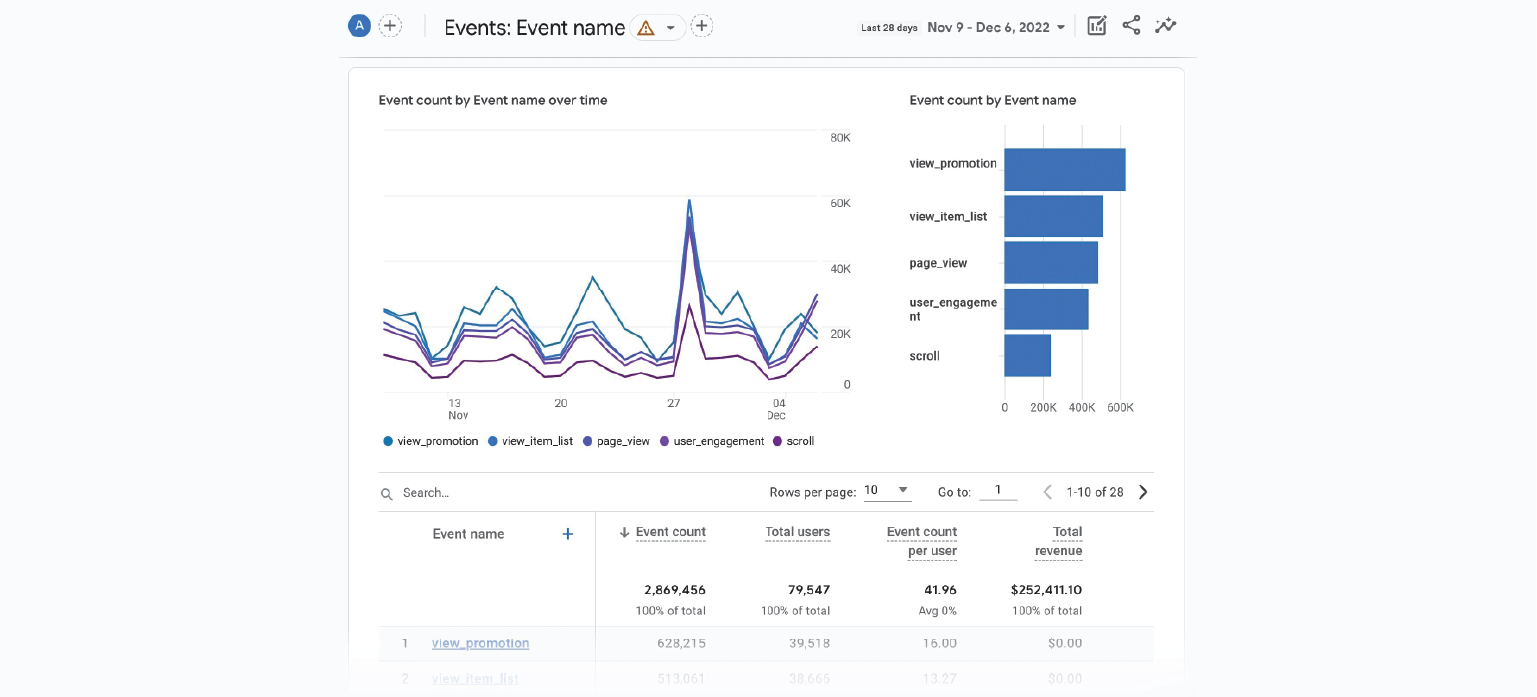
- Identify the pages on your website that receive the greatest (or least) visitors.
- Determine which other websites and search engines drive traffic to you.
- Keep tabs on your average time on site, page views, and bounce rate.
4. Configure an SEO Plugin (If You’re Using WordPress)

It is recommended that you install and configure an SEO plugin if you use WordPress. It will make search engine optimization for your website quite simple. Furthermore, it supports you with technical SEO tasks like setting up XML sitemaps and robots.txt.
The most chosen choices consist of Yoast, Rank Math, Semrush, and SEO Writing Help
5. Create and Submit a Sitemap

A sitemap is a file that makes it easier for search engines to locate, index, and crawl every page of your website. It gives useful information about the pages and files you deem relevant and highlights those that you believe are noteworthy. For instance, the most recent update date of the page or whether any pages have counterparts in other languages. If you use WordPress, a sitemap will be generated for you automatically. If you’re not, using a sitemap generating tool to create one is quite simple. After obtaining your sitemap, upload it to Bing Webmaster Tools and Google Search Console.
6. Create a Robots.txt File

A file called robots.txt instructs search engines which files and pages they may or may not crawl. It’s also really significant. It arranges the ways in which web crawlers visit, index, and present your content to search engines. By entering your homepage URL and adding /robots.txt, you may view your robots.txt file.
For instance: https://semrush.com/robots.txt
7. Check Search Console for Manual Actions

Manual actions are taken in response to blatant attempts to influence or break Google’s Webmaster Guidelines. Additionally, part or all of any manual actions on your website won’t show up in Google search results. User-generated spam, problems with organized data, strange links (to and from your website), sparse material, concealed text, and other things are examples of manual actions.
Examining Google Search Console for any manual actions is a smart idea. To achieve that, locate the “Security & Manual Actions” menu area by navigating down the tool’s sidebar navigation. Press the button. Next, select “Manual actions.” That ought to bring up a report with any problems found. If Google takes a manual action against your site, it will inform you in a GSC report.
8. Assure Google Can Index Your Website
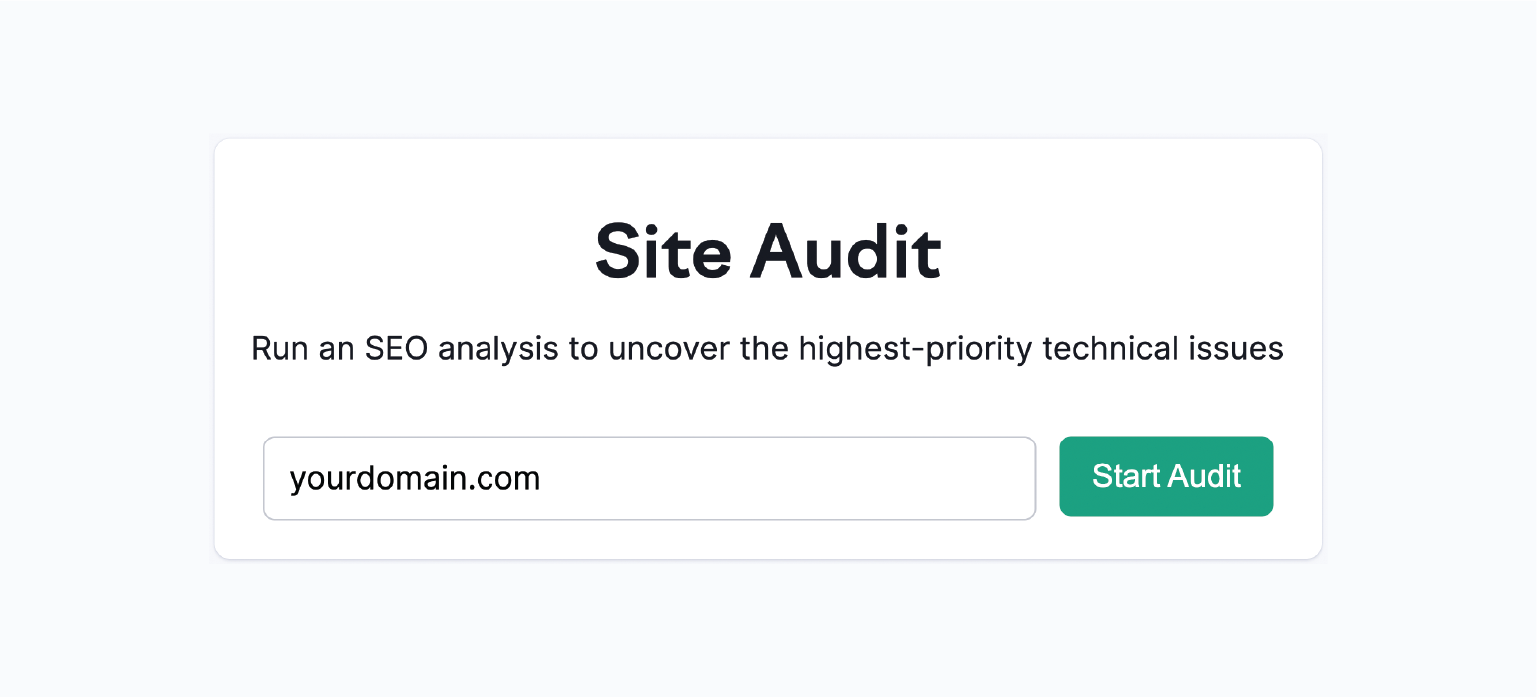
Make sure that Google can index your website, which is a component of having your SEO fundamentals covered. Indexability is the capacity of a search engine to index a page after analysis so that it appears in search results.
Use the Site Audit tool to assure that search engines can swiftly scan and index your website. Create a new project by entering your domain first. Next, choose “Website” as the crawl source, the desired number of pages for each audit, and the “Start Site Audit” button. Locate the report on “Crawlability” and select “View details.”
Following that, verify once again that the primary pages on your website that need to be indexed are indexed. Later on, this can save a great deal of troubleshooting.
Your website will struggle to rank and receive organic traffic if it lacks valuable content and an excellent on-page experience. Check if your website meets the requirements listed below. Additionally, concentrate on producing excellent content for people rather than just search engines.
The on-page SEO checklist is as follows:
1. Locate and Correct Title Tags That are Truncated, Missing, and Duplicated
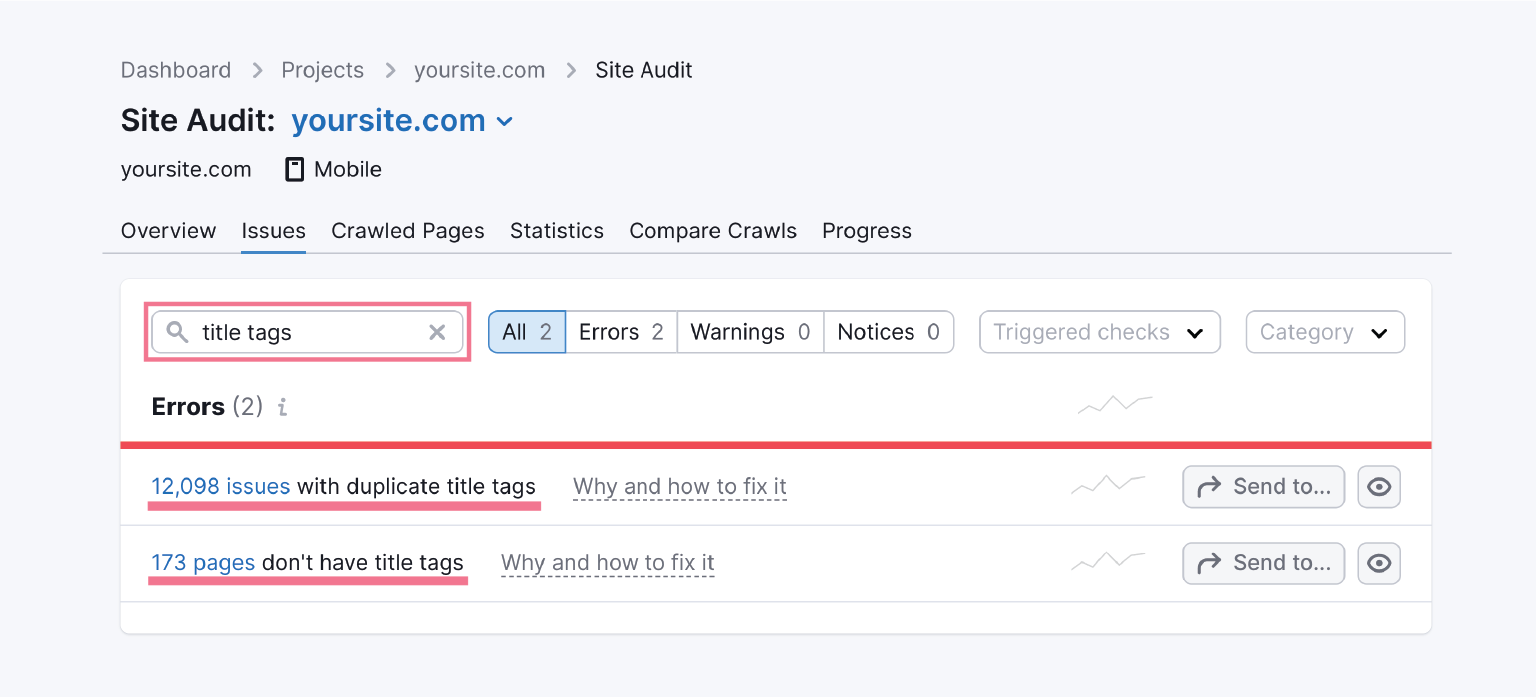
An essential (and fundamental) component of SEO is optimized title tags. They’re frequently the first item an SEO specialist looks at to improve a page rank.
2. Find and Fix Inconsistent and Missing Meta-descriptions
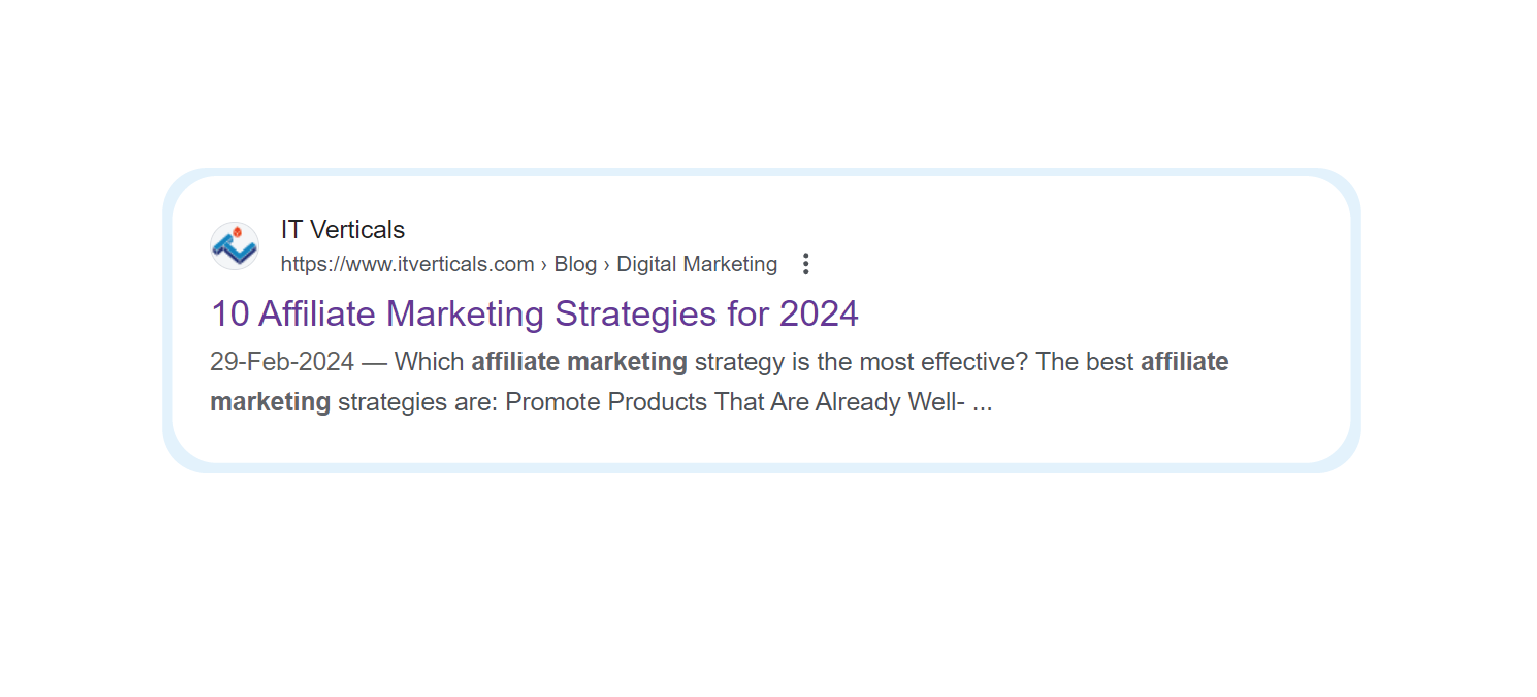
There is no direct ranking factor for meta descriptions. However, they do help searchers understand the purpose of your page. They persuade people to select your listing over another, which can impact your organic click-through rate (CTR) in both positive and negative ways.
As with title tags, you should stay away from:
- Duplicate Meta Descriptions
- Extended Meta Descriptions
- Incomplete Meta Descriptions
You may check your meta descriptions in Site Audit by going to the “Issues” tab. Look for “meta descriptions” there.
3. Find and Fix Multiple H1 Tags

The primary topic of a webpage can be marked up using an HTML heading called an H1 tag. There needs to be just one on each page. Because they enhance accessibility, enhance user experience, and help in search engines’ interpretation of material, H1s are crucial. Generally speaking, you should steer clear of:
Pages with H1 tag issues are flagged by Site Audit’s “Issues” tab. Duplicate H1s Long H1s Missing H1s. Just look up “h1.”Additionally, you want to give yourself enough time to fix any problems with your H1s.
4. Improve Title Tags, Meta Tags, and Page Content
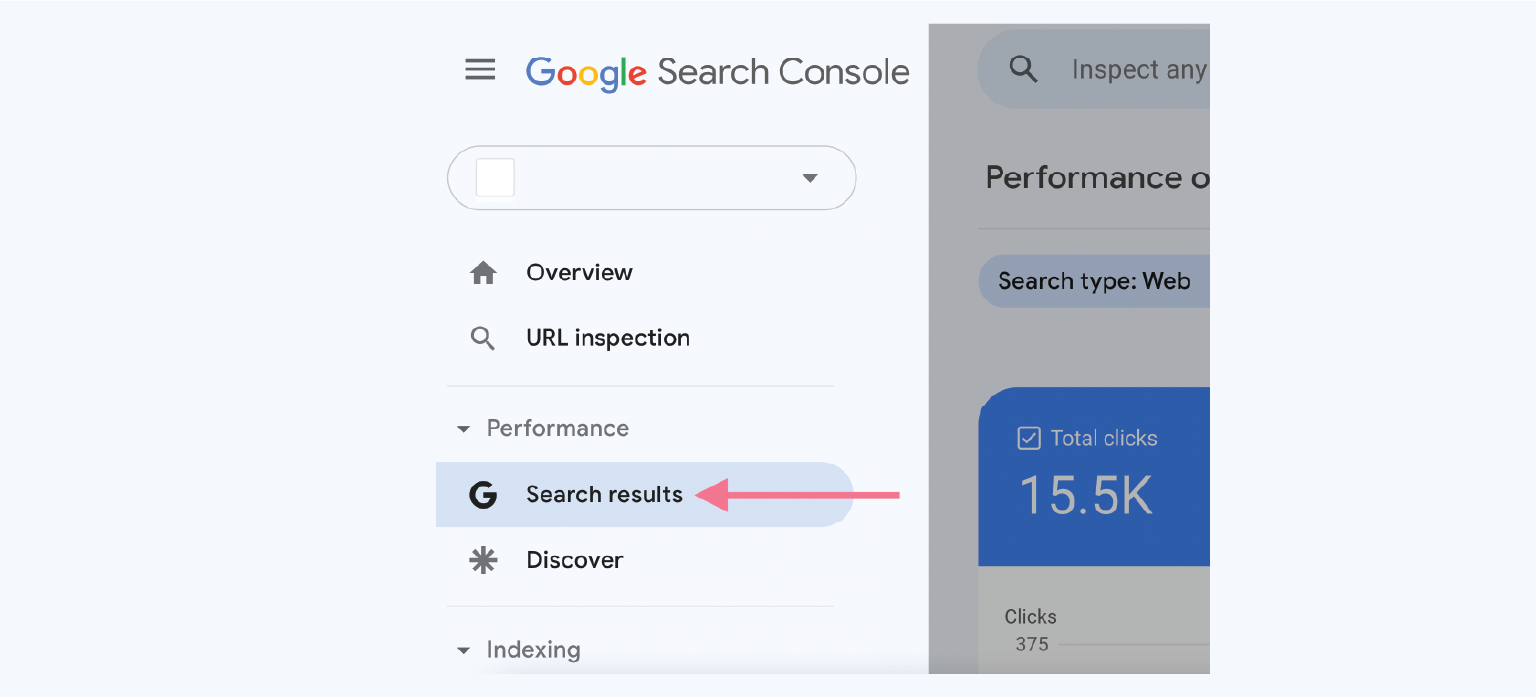
You are losing out on a chance to rank if your page titles and meta tags aren’t correctly optimized, not only for your primary keywords but also for their derivatives. To begin, navigate to “Search results” under “Performance” in Google Search Console. Verify that “Average position” and “Average CTR” are selected. Search for keywords with a low average position, few clicks, and a significant number of impressions by scrolling down.
This usually indicates that your page is ranking and related to the inquiries. Yet, you haven’t optimized it by utilizing different keyword versions in your tags or text. Remember that adding keyword mentions alone won’t have a significant impact. Consider these extra keywords as subjects for one or more H2s or subsections.
5. Audit the Current Content on Your Website
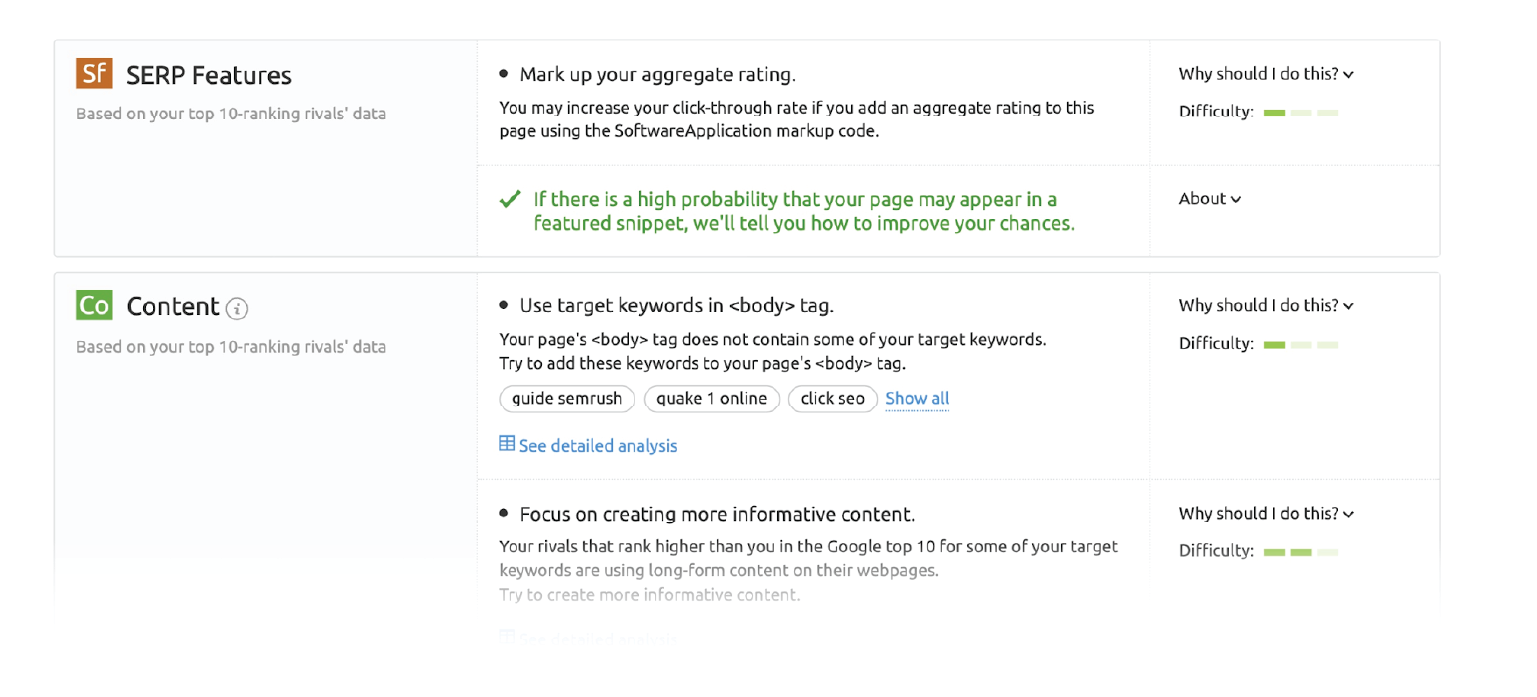
A content audit is the process of examining your content to identify areas in which it might be strengthened. You need to do an audit to figure out how to enhance your website’s SEO performance. Google Analytics and other similar tools can be used to audit your content. Begin by monitoring your pages’ traffic and engagement on a regular basis. Additionally, check that your content is updated and make any necessary modifications.
6. Make Sure to Include Alt Text for Images

Text that describes an image that is included in the HTML code of a page is called alt text, short for alternative text. It’s crucial since it facilitates image identification for search engines and blind or visually impaired people. Additionally, improving the alt text for your images can increase traffic from Google and Google Images. With Site Audit, you can locate photos without alt text instantly. Simply go to the “Issues” page and conduct a manual search for “alt attributes.” The program will display the number of photographs without alt text in a snap.
7. Include Your Keyword in the Body of the Page

Try to include your keyword once near the top of the page and at least three times in the body of the content. Additionally, make sure that each URL contains a minimum of 100 words—the more, the better. Although you should never add extraneous material to your website, and you can still rank with fewer words, I advise not starting a new page until you have at least 500 words (though fewer is still preferable).
8. Boost Internal Linking
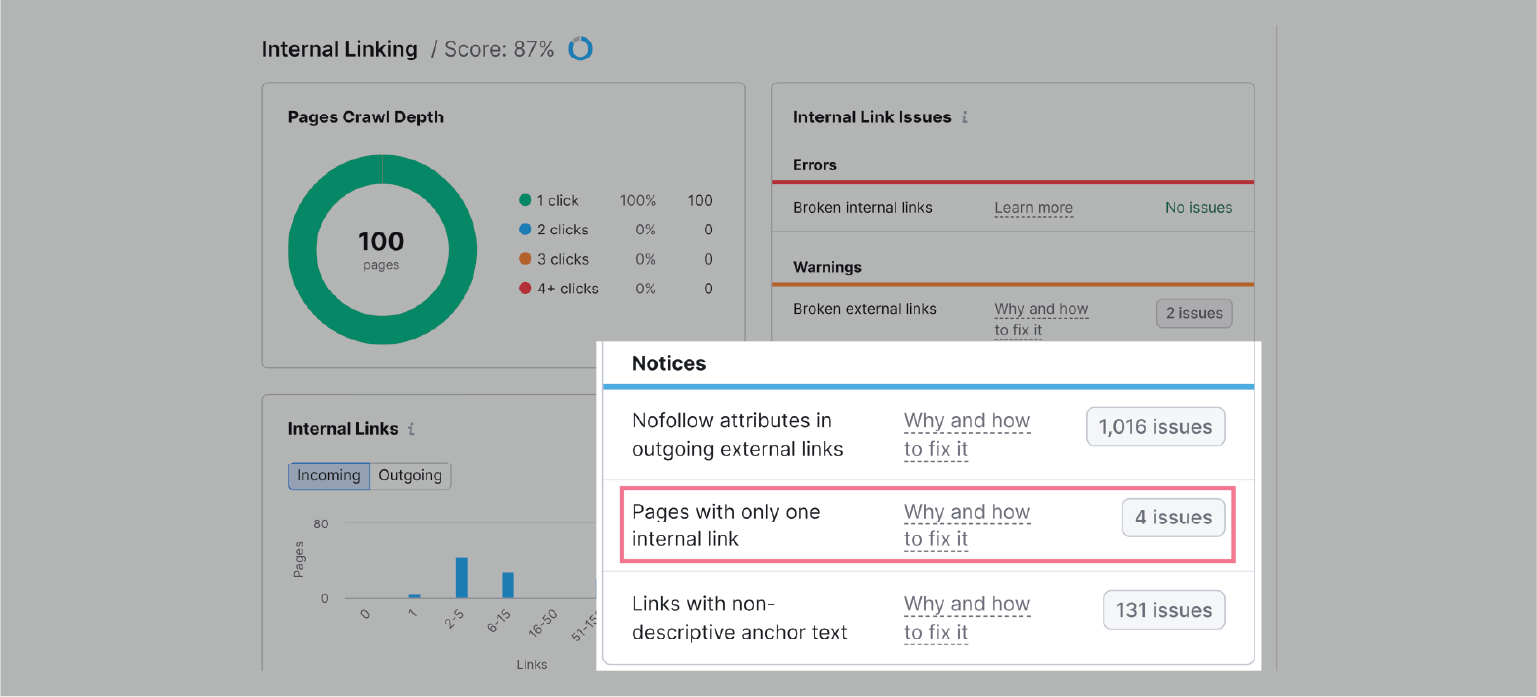
One of the most underutilized link-building strategies in SEO marketing is probably internal linking. They facilitate site navigation for both people and search engines. Improving the internal linking strategy of your website might yield significant results in a short amount of time.
Adding one or two internal links from reputable pages on your website can yield immediate benefits for certain marketers. The “Internal Linking” report from Site Audit displays the pages with only one internal link link.
9. Find and Fix Keyword Cannibalization Issues
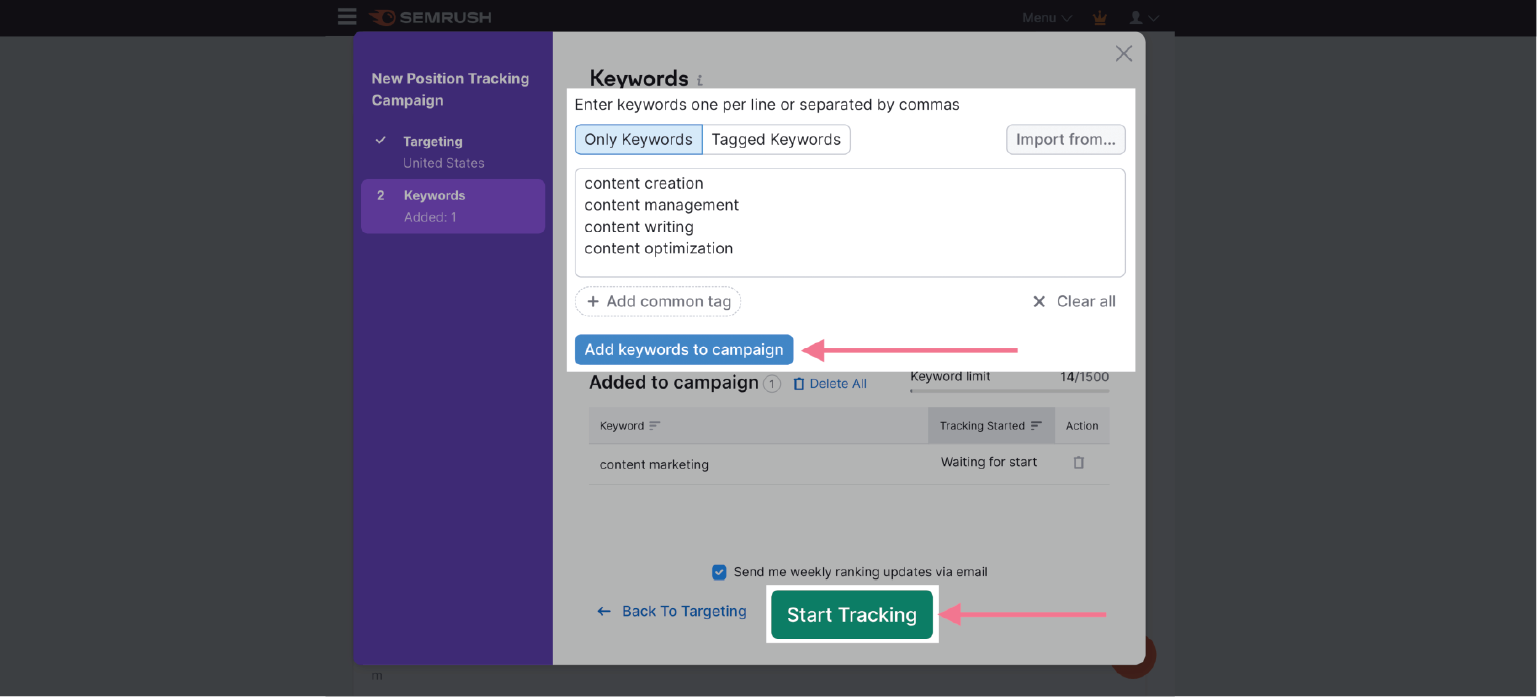
When one or more of your site’s pages target the same term and intent, this is known as keyword cannibalization. The ranking ability of the other is impacted by one of the two. Furthermore, none will function as well as it could. It’s not what you want. Because search engines will have a hard time choosing which page to display in the SERPs, you will struggle to rank for those keywords.
There are numerous popular methods for resolving keyword cannibalization:
- Remove and redirect cannibalized pages
- Canonicalization (tell Google which URL to prefer)
- Re-optimize pages
- Merge pages
10. Identify and Fix Orphan Pages
A page that has no internal links to it is known as an orphan page. Because search engines can only find pages through backlinks or the sitemap file, these pages often have very little significance. Additionally, visitors must know the URL in order to access the page. Consequently, every page on your website needs to link to at least one other page.
11. Make Sure the Content on Your Website is Updated
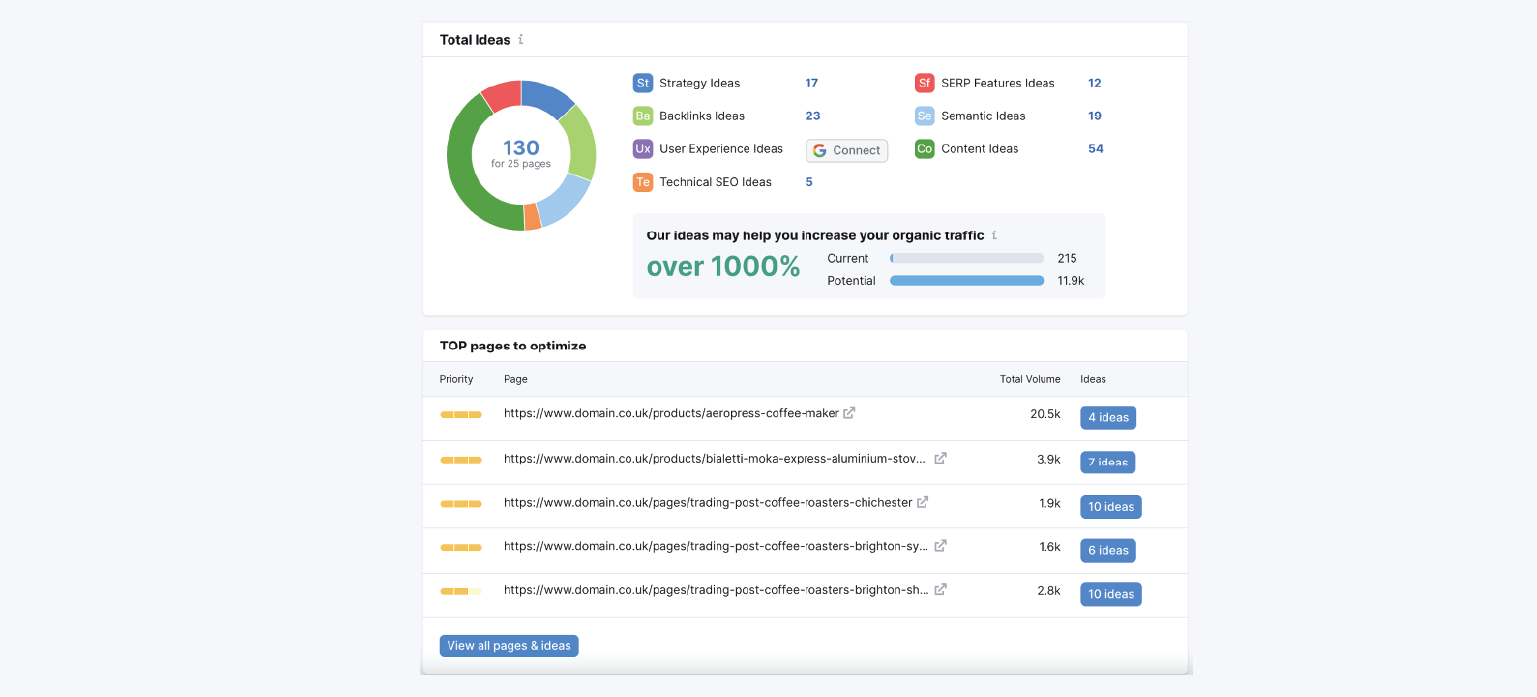
Content ages and goes out of date on its own. Furthermore, one of the simplest things you can do to get significant SEO benefits is to update outdated information. It was time well spent if the content on your page might use some updating or if it has information that is out of current.
After all, users rarely get the optimal experience from out-of-date content. Why then would Google still give it a ranking if it wasn’t updated? Make sure your content is updated frequently by using a tool like Semrush’s On-Page SEO Checker. Following the configuration of your project’s parameters, the tool will provide you with optimization suggestions to assist you in raising your pages’ Google ranks.
The act of identifying potential search terms that might be pertinent to your company and your clients is known as keyword research. It entails locating, arranging, and ranking keywords. To subsequently support your keyword plan. This is a list of the crucial keyword research tasks you must complete in order to succeed with SEO.
1. Understand the Intent of Searchers
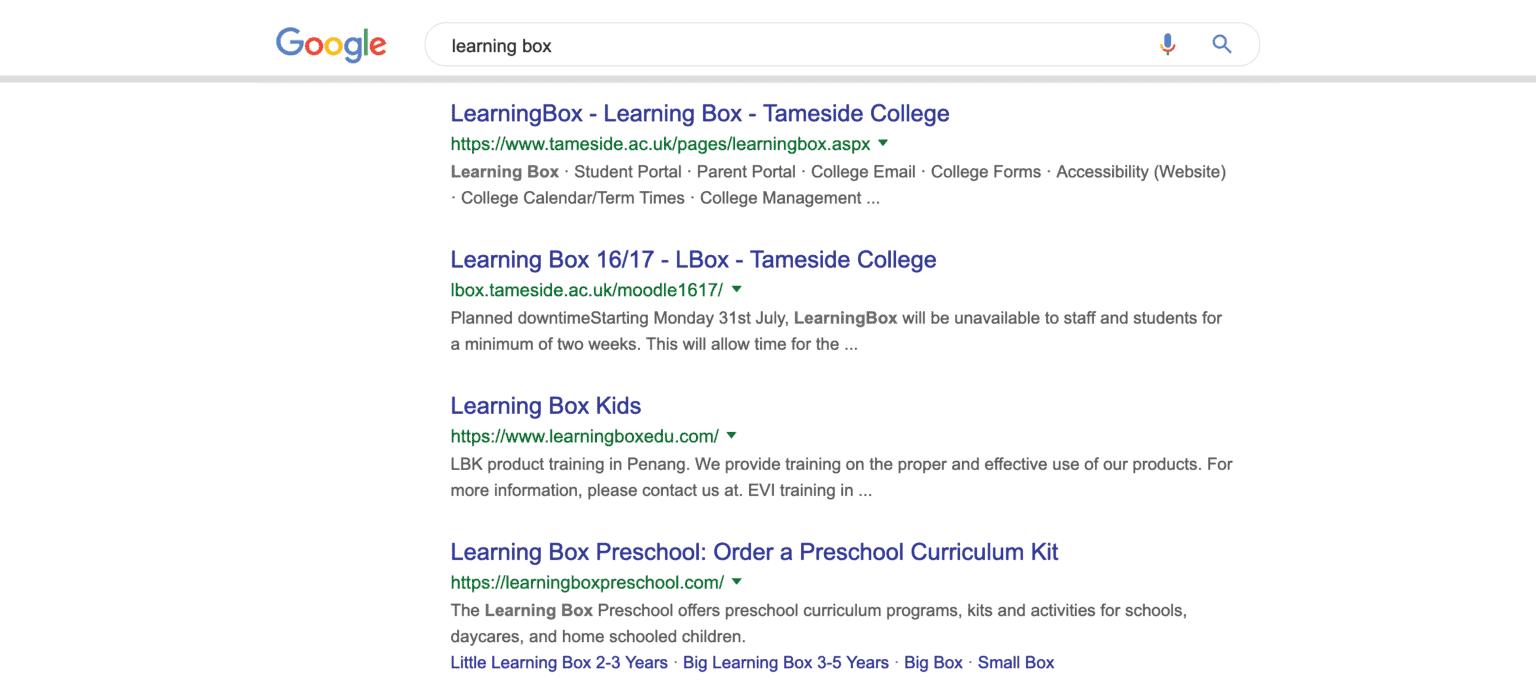
This is essential to ensure that SEO generates a profit for your company. Acquiring knowledge about people’s search queries is the first step toward answering them. Let’s take an example where you manage a boxing club website and discover that the term “learning box” gets searched 8,100 times a month. It looks like a fantastic chance to attract anyone interested in learning how to box – Right?
If you were unaware of the meaning behind “learning box,” you would not have wasted time or money attempting to rank your boxing club website for that particular keyword.
2. Recognize How Your Sales Funnel Incorporates Keywords
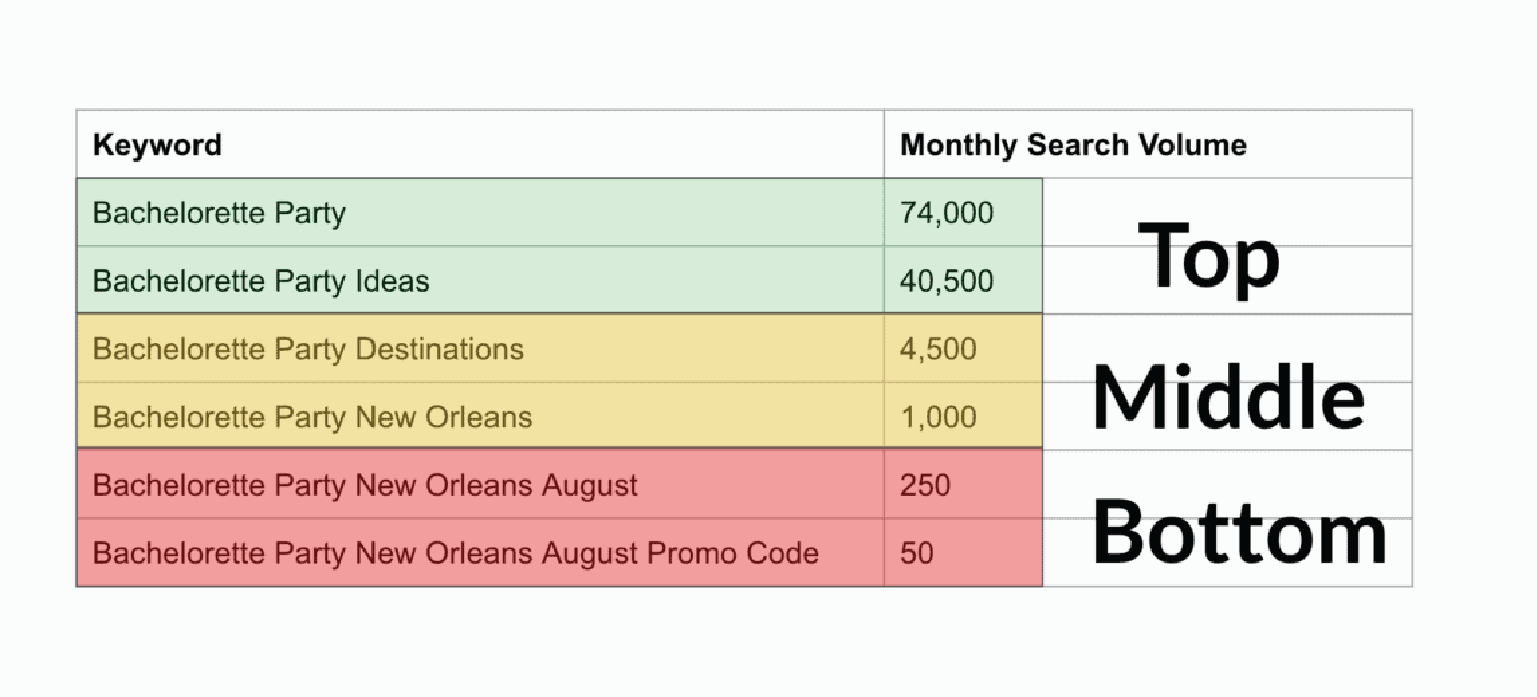
Not every keyword will be worth the same amount to your company. While certain keywords will drive more traffic, some have a higher conversion rate. When using keywords, be careful to strike a good balance. This is an example of mapping some keywords against a bachelorette party website’s sales funnel. If you didn’t do this, you may be tempted to ignore some phrases with lesser search traffic if you are unaware of their higher likelihood of turning visitors into paying clients.
3. Understand Search Volumes
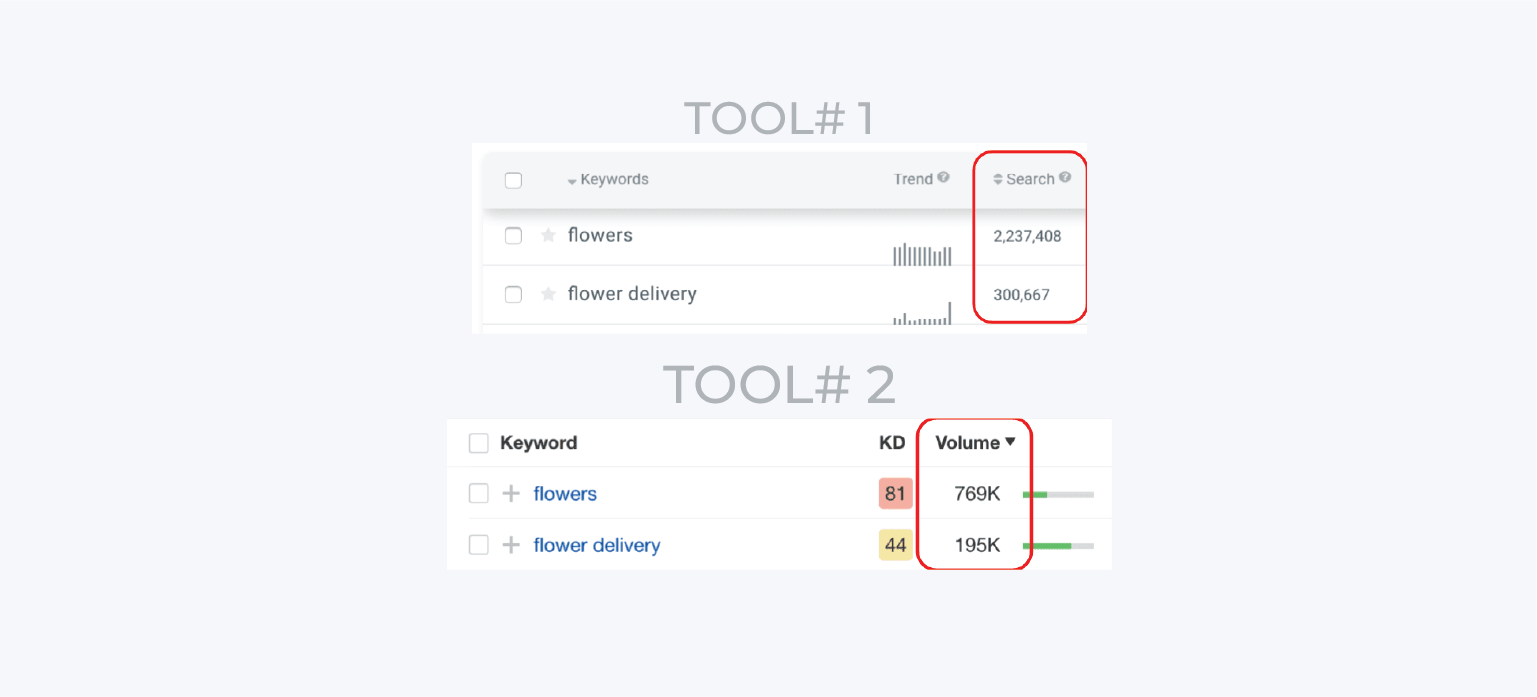
SEOs and SEO software programs frequently disagree on this issue. Search volumes are frequently used as one of the primary measures to prioritize fresh content ideas and optimize your website while creating a keyword strategy. The majority of keyword research tools provide an estimate of the monthly search volume or the number of times a particular keyword is searched for on a monthly basis. The issue is that search volumes differ according to the tool you utilize:
The secret is to avoid wasting ANY time attempting to determine whether figure is accurate (because different tools will use different data sources). Consider search volumes as relative measurements as opposed to absolute ones. You may infer from the aforementioned facts that “flowers” is four to seven times more popular than “flower delivery.”
4. Understand Keyword Difficulty
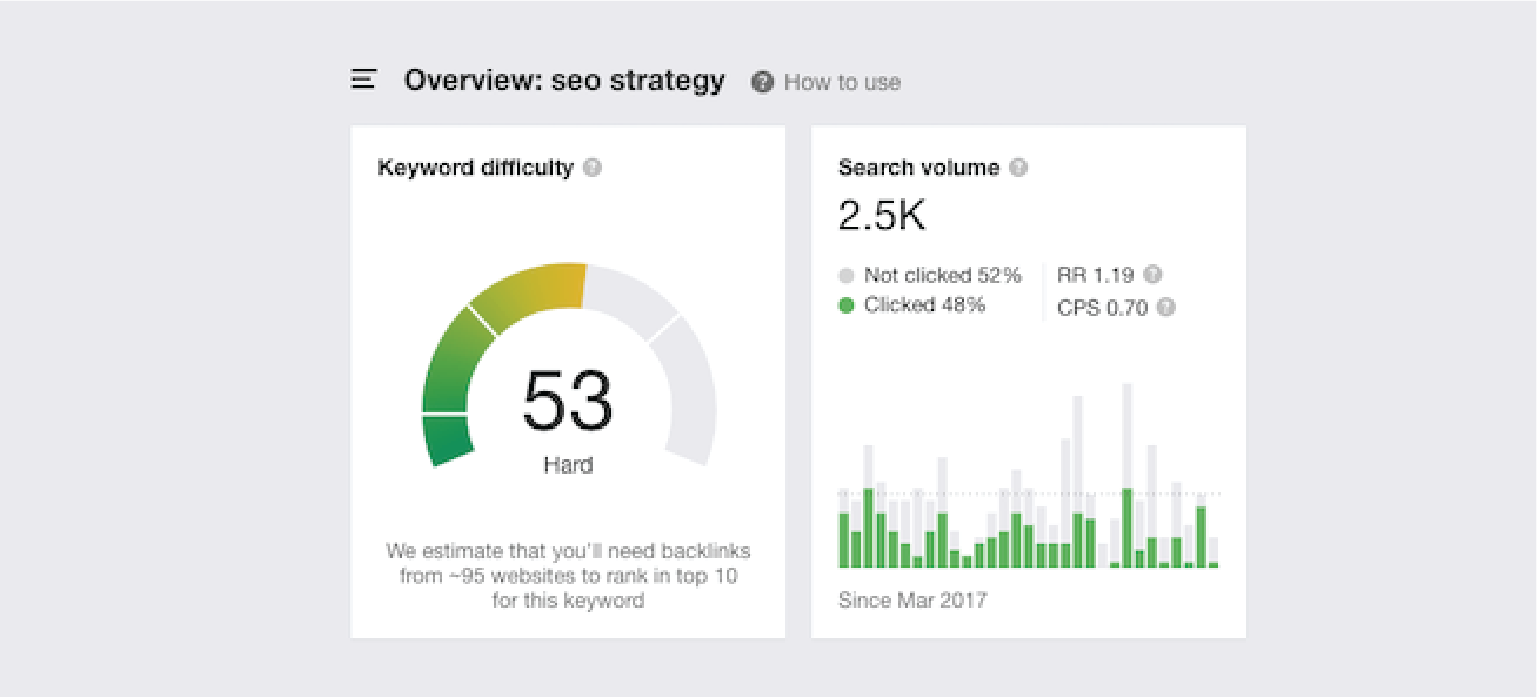
Assuming you choose a relevant keyword for your business, the following stage is to determine whether you can compete for its traffic. Not every keyword will be as simple—or challenging—to rank for. With the exception of Google’s Keyword Planner, the majority of keyword research tools provide an indicator of how difficult it will be to rank for a certain phrase. When comparing keyword difficulty, use only one tool, as each tool calculates this differently.
Greater difficulty indicates that you will have to put in more effort to rank for that phrase. This entails creating content that is superior to your rivals’, constructing more links, resolving technical problems, and doing everything else on this checklist. When comparing keyword difficulty, use only one tool, as each tool calculates this differently.
Greater difficulty indicates that you will have to work harder to rank for that phrase, which involves developing content that is superior to that of your rivals, constructing more links, resolving technical problems, and doing everything else on this checklist.
5. Understand the Difference Between Head and Long Tail Terms

Before long, you’ll notice that SEOs frequently discuss head phrases against long-tail keywords.
Head terms are words that:
- Possess a large volume of searches
- They are generally highly competitive, or they score highly on the difficulty scale.
- Are considerably broader—nearer the funnel’s top
Head terms are the reverse of long-tail keywords, which are:
- Possess a lower search volume than head terms
- Are comparatively simpler to rank for, or they have a lower difficulty rating.
- Are more focused and near the bottom of the funnel.
It’s difficult to determine what someone searching for a “backpack” is trying to find—anything from a backpack photo to a hostel for travelers. Your website will receive a lot of traffic if you rank for “backpack,” but the visitors’ goals may vary greatly, and many may not align with what your company provides. However, a person looking for the “best carry-on backpack 2018” is undoubtedly considering their options and is ready to make a purchase. Although you will receive far less traffic if you rank for the phrase “best carry-on backpack 2018” in search results, those visitors are far more likely to become paying customers.
6. Make a Keyword Map

After determining which keywords to target, you must “map” (assign) them to the appropriate pages on your website. In order to identify a broader set, start with a single term. Click “Search” after opening term Overview and entering your term. The “Related Keywords” are what we are searching for.
Group keywords that provide the same response by exporting the keywords onto a spreadsheet. Next, you should concentrate on visualizing the potential pages and structure of your website using each combination of keywords. Sorting keywords into appropriate categories is the final stage.
7. Examine the Intent of Pages That Rank
A user’s search intent is just the motivation behind their query. Four categories of search intent exist:
Navigational: Searching for an object
Informational: Seeking to expand on one’s knowledge
Transactional: Seeking to carry out a certain task
Commercial: Seeking additional information before deciding what to buy. One of Google’s primary objectives is matching consumers’ search intent.
Thus, always make sure that the content of your page is relevant to the searcher’s purpose for the keyword you are trying to target.
Off-page optimization, often known as link building, is one of the most effective ways to raise your ranks. To tell you the truth, Link building is one of the most difficult aspects of SEO. However, you can employ a few strategies to obtain easy links (see the options for easy links below).
1. Recognize Authority Measures
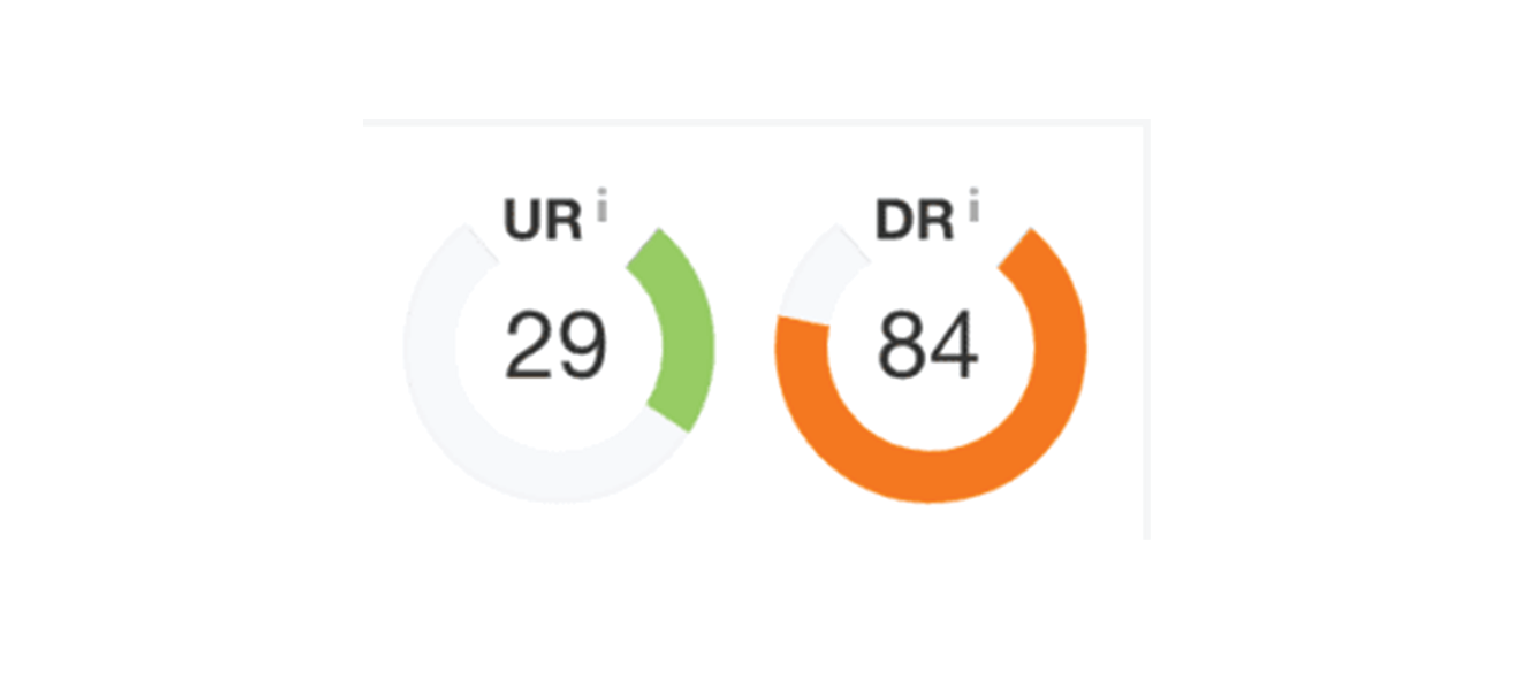
Search engines mostly depend on the authority of pages and websites to decide which page ranks higher than all others. Authority in SEO is mostly based on links, or more precisely, links pointing to your website from other websites. The authority is determined according to the following general guidelines:
- Fewer links compared to more links
- Links from websites related to your issue are preferable to links from websites that have no relevance at all.
- Links from highly reputable websites are preferable to those from less reputable websites.
- Multiple links from different websites > multiple links from one website
- Site-wide links (e.g., header, footer, or sidebar) within the body
While some programs have created their own authority measures, search engines do not broadcast these.
Note: Ahrefs’s proprietary measurements for the authority of a page are called URL Rating (UR) and Domain Rating (DR), respectively.
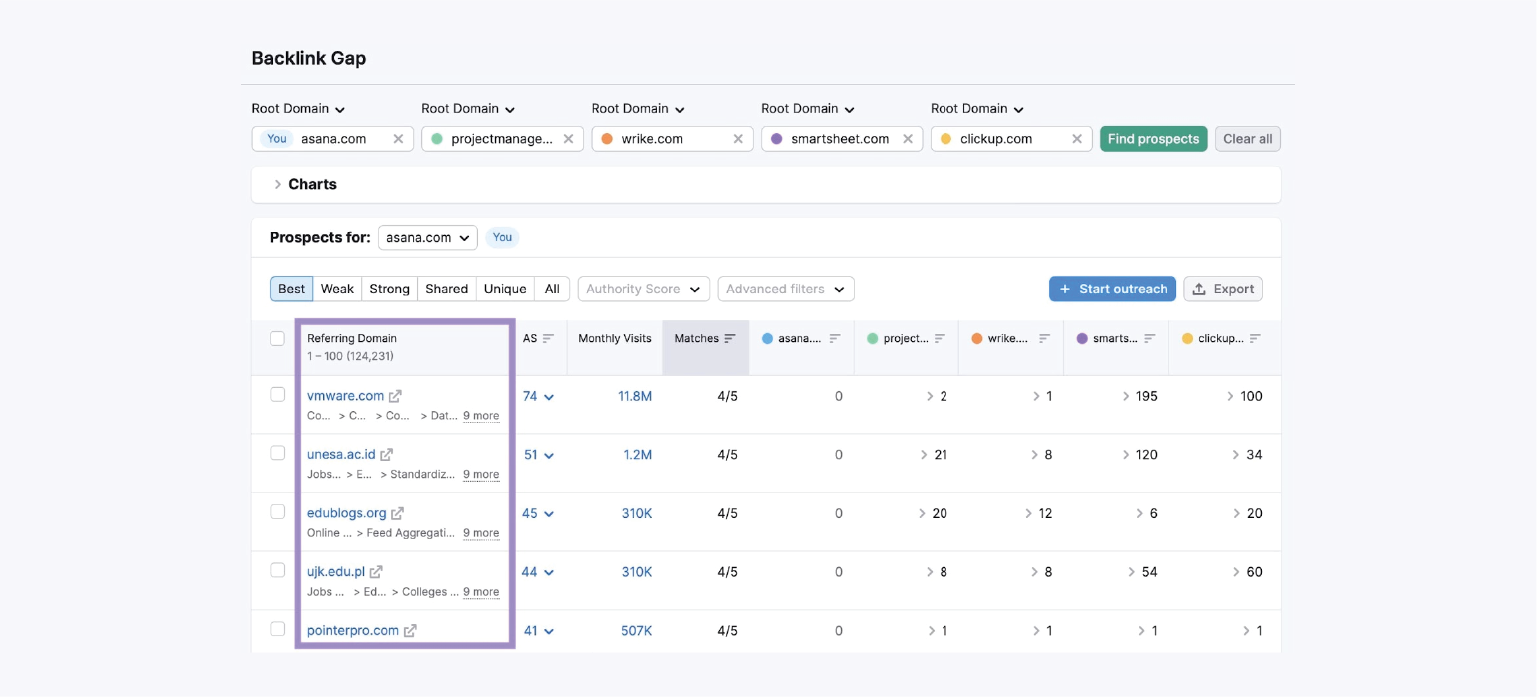
A backlink gap audit is another tool you may use to identify websites that link to your rivals but not to you. Why? They will most likely be pleased to link to you if they are already linking to your rivals. Particularly if your material is superior, this is accurate. To begin, use our Backlink Gap tool, enter the domains of your competitors and yourself, and click “Find prospects.” All of the many domains that link back to the websites you entered are listed in the table.
3. Create Links Out of Unlinked Mentions
A website mentioning you or your company without providing a connection to you is known as an unlinked mention. The fact that they have previously brought you up makes this tactic extremely effective. They probably won’t mind if you make it a link. Get in touch with the author or page owner of each unlinked mention you come across and politely ask for a backlink.
4. Guest Post on Relevant Sites
Google started taking action against link-building spammy guest posting in 2014. Does this imply that guest blogging is no longer effective? No. Guest blogging may be a terrific technique for building links if you publish excellent guest posts on relevant websites and naturally (not spammy) add links back to your site. Using sophisticated search operators to do a Google search is a simple approach to locating guest writing opportunities.
To find your desired keyword, try these searches:
- “[keyword]” “write for us.”
- “[keyword]” “become a contributor”
- “[keyword]” “submit guest post”
- “[keyword]” “guest post by”
- “[keyword]” “guest post”
- “[keyword]” inurl:blog “contributor guidelines”
- “[keyword]” inurl:blog “write for”
Reach out to the relevant blogs or websites; it could be a good idea to draft a few post pitches in advance.
5. Use Link Building for Resource Pages
Resource pages are carefully compiled listings with links to useful articles, tools, or resources. Stated differently, their purpose is to offer connections to external websites. Simply get in touch with the writers of these resource pages and request that they include your article or page. By utilizing sophisticated search operators in Google, you can locate these opportunities: To find your desired keyword, try these searches:
- “[keyword]” inurl:resouces
- “[keyword]” intitle:“resources”
- “[keyword]” intitle:“useful resources”
- “[keyword]” inurl:links intitle:“link resources”
- “[keyword]” intitle:“useful links”
- “[keyword]” inurl:additionallinks
6. Make use of Broken Link Building
Recall that I indicated that there was a simple link chance to “Fix Broken Inbound Links”? You have an opportunity when other websites neglect to update their broken inbound connections, which is common for larger websites. There are multiple methods for locating these broken links:
Method 1: Make use of a Chrome add-on/extension
To look for broken links on webpages, you can use any Chrome extension or broken link checker.
7. Create and Optimize your Google Business Profile.
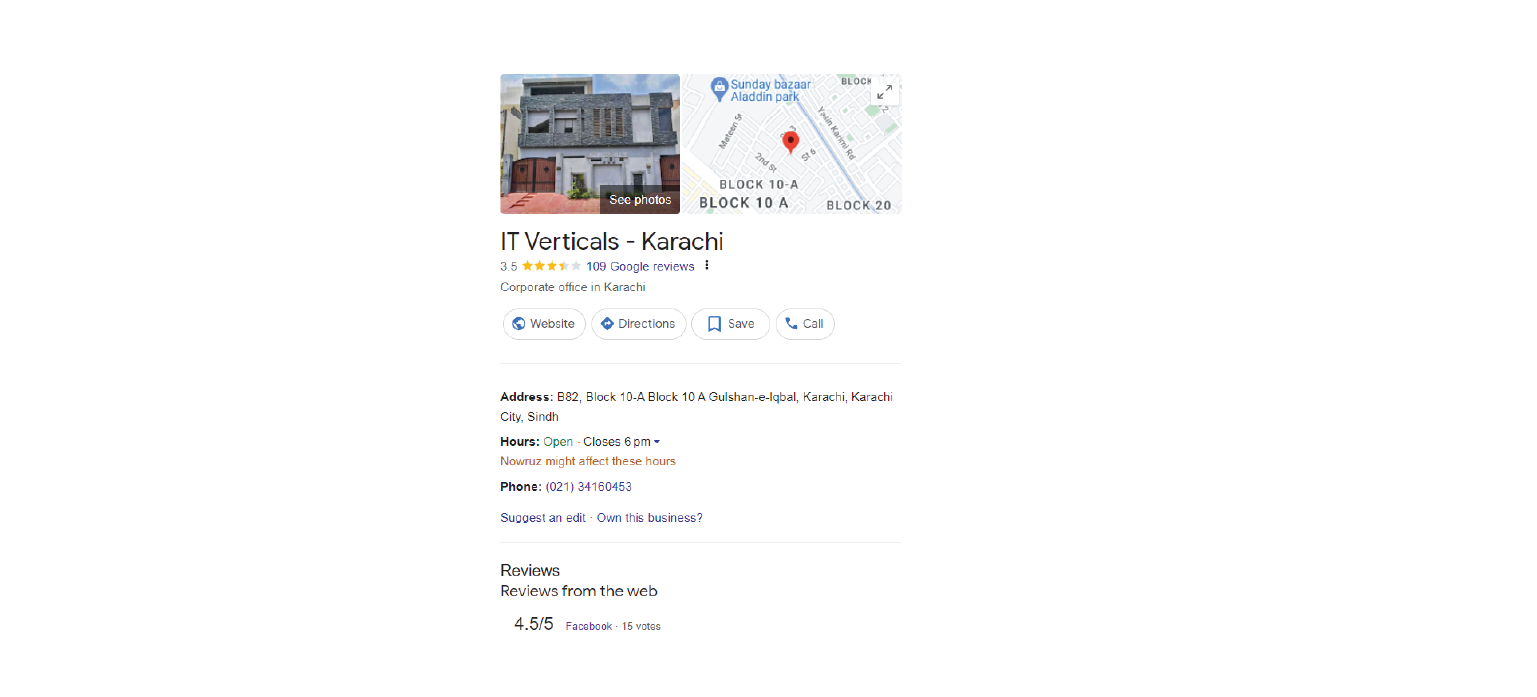
Make sure your local business has a Google Business Profile (previously known as Google My Business) if you are a business owner. Using Google Maps and Search is one of the most effective ways to connect with customers. If not, you will effectively be giving a competitor visits.
An example of a Google Business Profile might be the following:
Moreover, consider these business profile pointers:
- Represent your company as truthfully as you can
- Emphasize the distinctive qualities of your company.
- Upload movies and photos and make frequent updates.
Technical SEO Checklist
Everything you do to make it simpler for search engines to find your website is known as technical SEO. Your site’s ability to rank and receive organic traffic may be hampered by technical problems.
1. Fix Crawl Issues
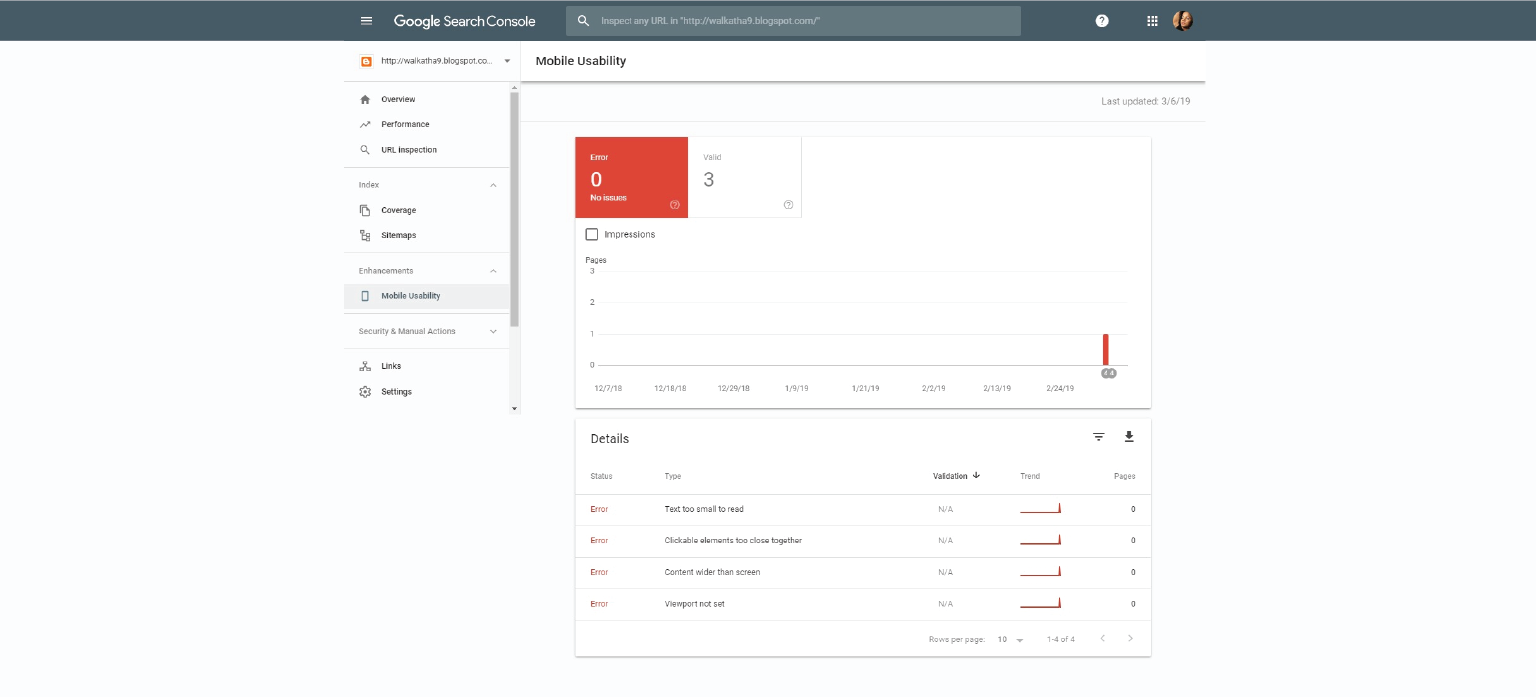
The problems that stop Google from seeing your material are known as crawl errors. Correct every mistake you see in this report, and keep an eye on Search Console to address any new problems as they arise. Using Google Search Console’s Coverage report, you may locate them.
2. Fix Broken Links

Broken links on your website give Google a negative impression. A website with a large number of broken backlinks is most likely out of date and unlikely to offer searchers a helpful result. You should make an effort to prevent broken links on your website. Screaming Frog and ahrefs are useful tools for identifying broken links.
3. Switch to HTTPS
Google has pushed for more websites to use HTTPs in an attempt to make the internet “safer” for consumers. Thus, moving from HTTP to HTTPs may provide you a little boost in search engine rankings.
4. Assure There Are No Duplicate Articles on Your Website
When two or more URLs on your website are the same or very similar, duplicate content problems arise. This may reduce your content’s SEO value over a number of URLs. To address any duplicate material that may be crawling and penalizing your website, use Google Search Console, canonical tags, or 301 redirects.
5. Fix Duplicate or Missing Meta Tags

Your website may suffer from duplicate or missing meta tags (title and meta description). Most people go-to resource for finding these is Screaming Frog: If you’re using WordPress, simply go to Yoast after you’ve determined which URLs are broken and fix them.
Here are some resources to help you deal with duplicate or missing meta tags:
- Screaming Frog
- Yoast SEO (for WordPress users)
6. Fix Incorrect Redirects

First common problem: 302s when they should be 301s. A permanent redirect, or 301 redirect, transfers nearly all of the previous page’s SEO value to the new one. This is a wise diversion. A 302 redirection is just transitory. It is employed for time-sensitive promotions or site upkeep. The rerouted page’s SEO value is not transferred to the new location. Find 302 redirections on your website by using Screaming Frog to crawl it and replace (almost all) 302 redirects with 301 redirects.
7. Redirect Chains are the Second Common Problem
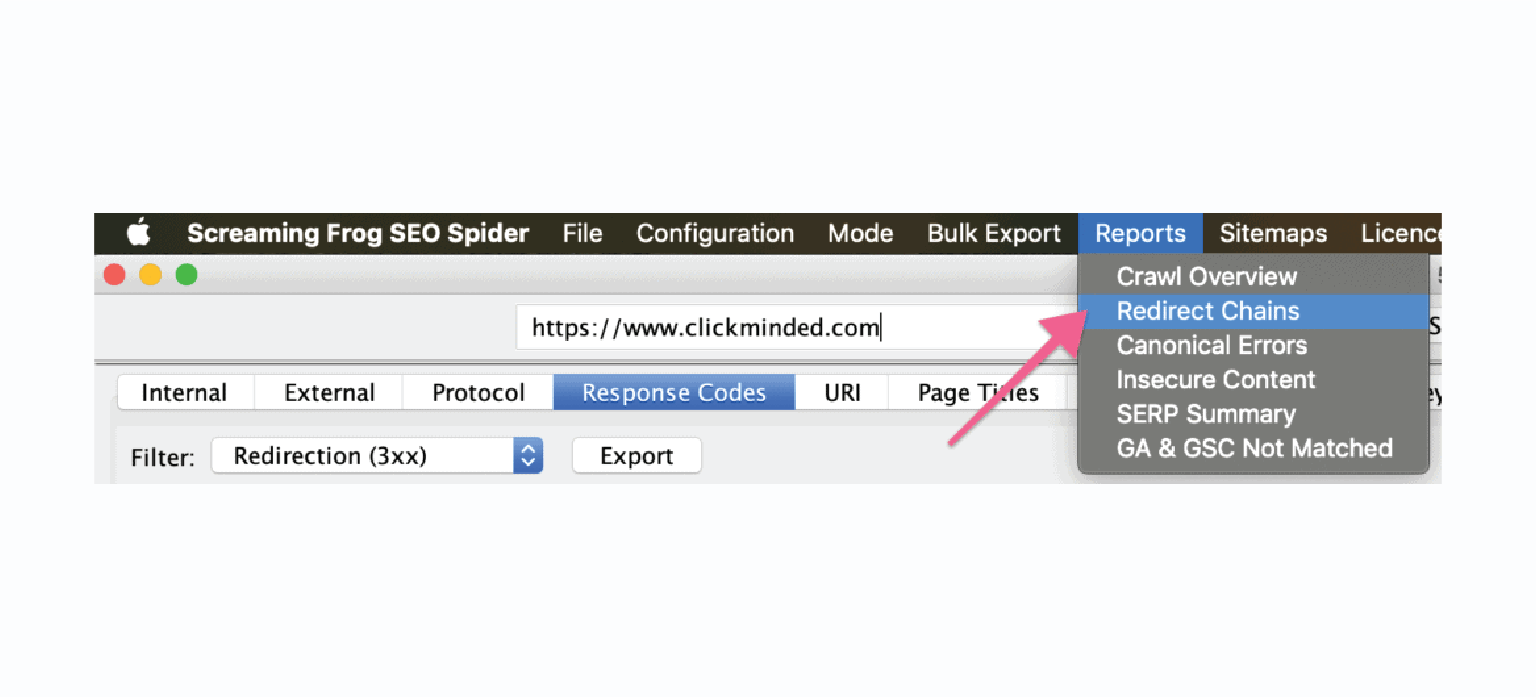
Less value is provided from the original URL to Google, and the more redirects it has to go through to find a URL.
An example of a redirect chain would be:
Redirecting to www.yourwebsite.com/page-2 from www.yourwebsite.com/page-1
Redirecting to www.yourwebsite.com/page-3 from www.yourwebsite.com/page-2
It’s preferable to complete this in a single step rather than going through www.yourwebsite.com/page-2:
There is a redirect from www.yourwebsite.com/page-1 to www.yourwebsite.com/page-3.
Find these using the redirect chain report provided by Screaming Frog:
Here are some resources to help you fix bad redirects:
8. Modify Your Website for Mobile
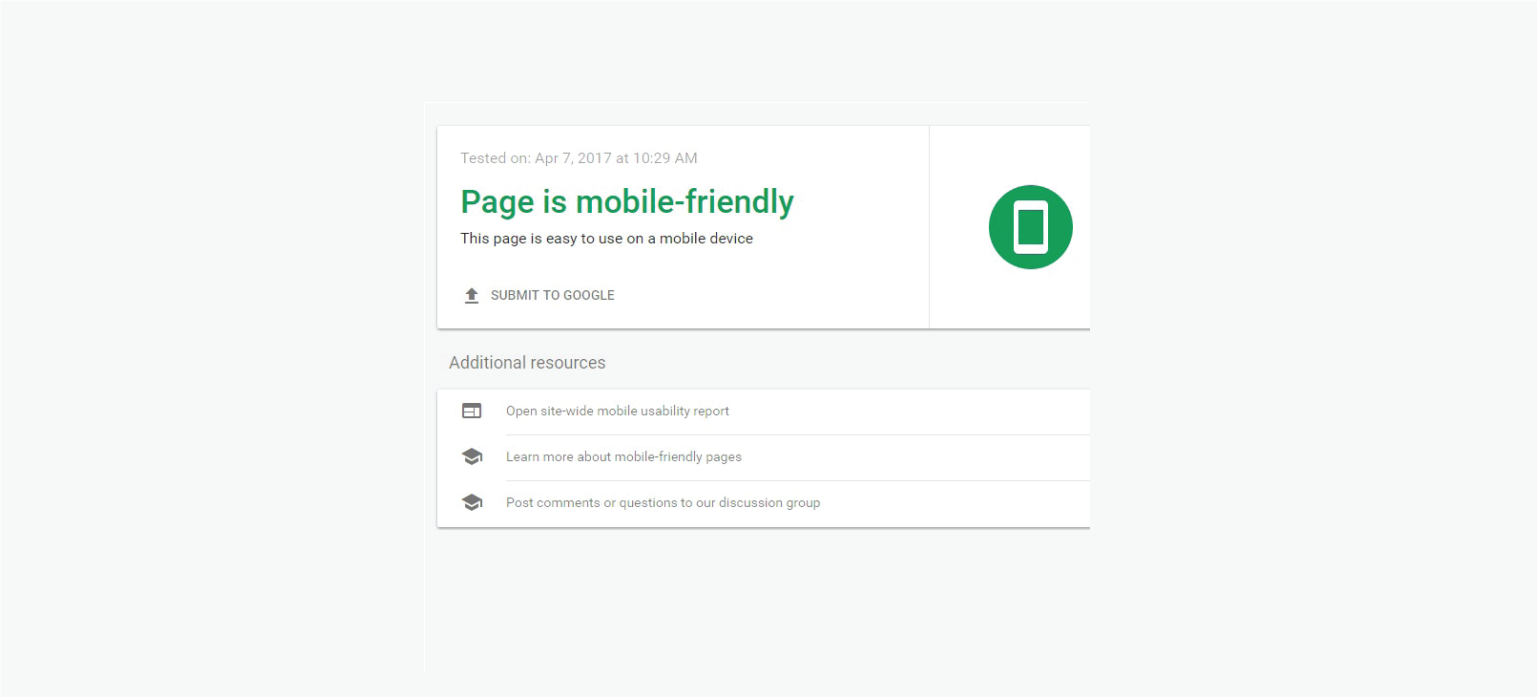
A website that is not flexible to multiple screen sizes and shapes will have a detrimental impact on usability, especially for local searches, as mobile devices account for an increasing portion of web traffic. If you want to learn more about optimizing your e-commerce for local search, here is another guide on Local SEO.
Additionally, Google just implemented the mobile-first index, which means that when they crawl and index your website, they will do so on a mobile device rather than a desktop computer. In essence, what they’re saying is that your website will only rank highly on Google if it is mobile-friendly. You can assess your website using Google’s Mobile-Friendly Test tool:
Use a responsive theme if you’re using one, such as Squarespace, Shopify, or WordPress.
Here are some tools you can use to make your site faster:
9. Submit Your XML Sitemap to Google Search Console
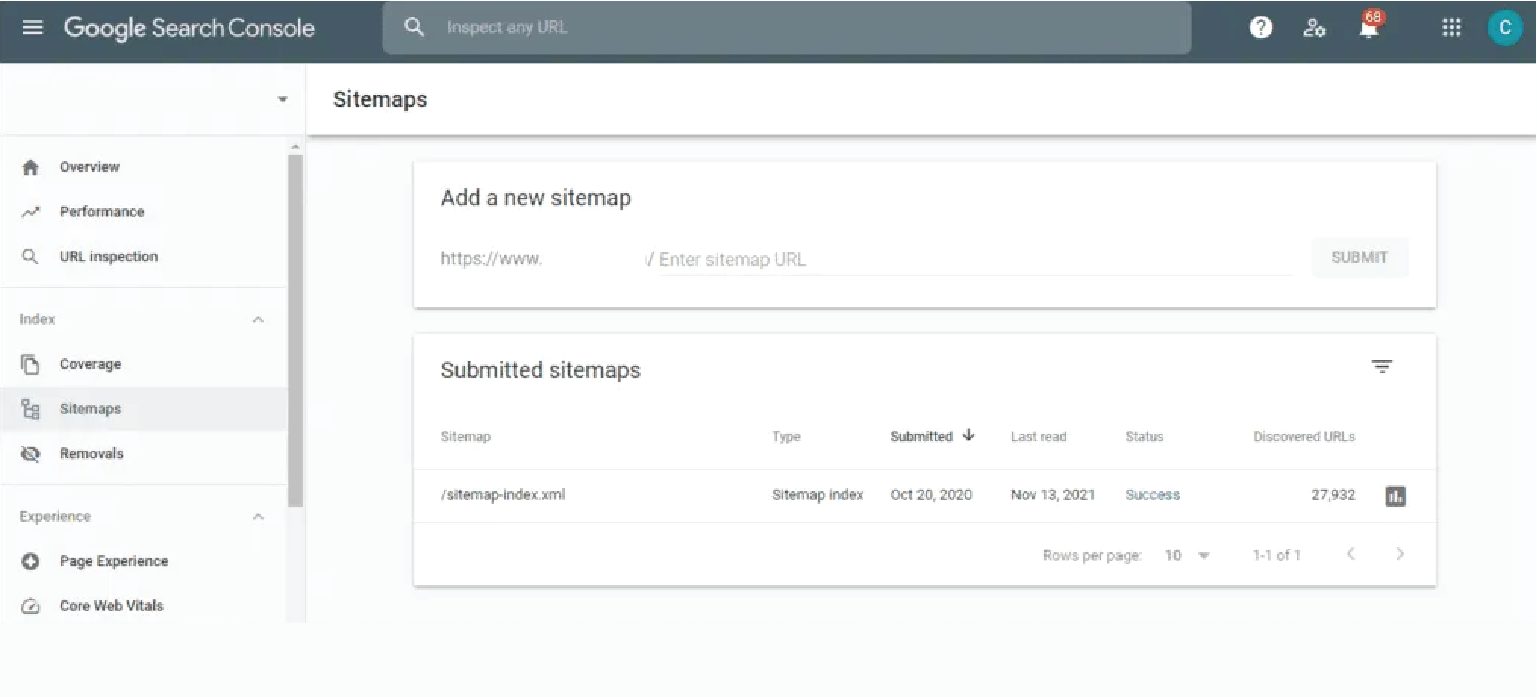
Search engines can better comprehend your website’s structure and locate all the pages you want indexed with the aid of an XML sitemap.
To submit your sitemap to Google, utilize the Google Search Console:
Yoast SEO is a plugin that will manage and automatically update your sitemap if you use it. If Yoast isn’t used, you can use Screaming Frog to crawl your website and create a sitemap.
10. Create Robots.Txt File
Your XML sitemap and a robots.txt file will outline the activities that crawlers are permitted to do on each page of your website. A search engine included in the top-level directory gives you more control over how search engines index and crawl your website. You can prevent
Google from crawling your WordPress login URL, for instance:
You can set up distinct protocols for various search engines by customizing these instructions for different kinds of crawlers.
You can use the following tools to draft and test your robots.txt file:
11. Use Schema Markup
Schema Markup is one SEO strategy that might help in improving your understanding of your content. Schema installation by hand is a little stressful, though.
You may use Google’s Structured Data Testing Tool or Rich Results Test, making work much easier.
Local SEO Checklist
Developing a successful local SEO plan and seeing it through to completion are difficult tasks. We’re providing you with this checklist to assist you in achieving this by providing some structure.
1. Google Business Profile
Establishing your Google Business Profile should be the initial item on your local SEO checklist. For local SEO, why is creating a Google Business Profile important? Increase your visibility on Google Maps and Google Search, where potential clients can access your information, by creating a Google Business Profile.
You’ll have a personal profile where you may display reviews, upload images, and add information about your company directly in the search results. To get yours set up, go to Google Maps and either add your company or claim the one that already exists. Google provides guidance along with a useful video at this link.
2. Choose the Ideal Business Sector
Selecting the category that best fits your organization is a crucial step in this process. Selecting this category for SEO purposes is similar to selecting the primary goal keyword for your website that best represents your offering. You have a choice of nearly 4,000 categories. Additionally, you can designate up to ten categories for your company. Selecting categories that are both common search terms and best fit for your business is advised.
You may select “Fishing Camp” or “Summer Camp,” for instance, if you have a summer fishing camp.
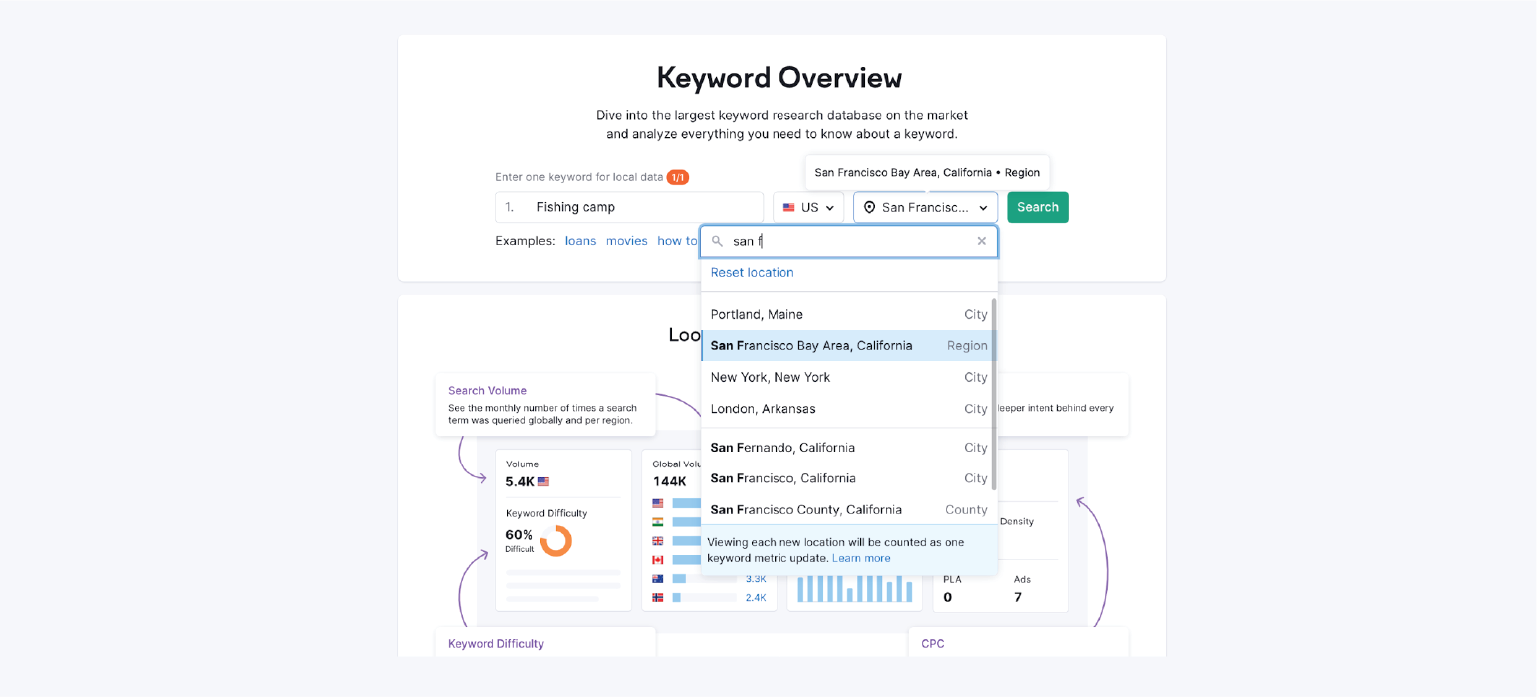
Let’s say you enter these two terms using the Keyword Overview tool on Semrush. Then, as you can see from the graphic above, there were far more national searches for the “Summer Camp” than for the “Fishing Camp” (1.9 thousand vs. 49.5 thousand monthly searches in the United States, on average).
Still, you can go even further in detail than that. A local metrics filter has been added to the Keyword Overview tool to assist you in finding out what people are searching for in the area of your choice. You can use the tool to focus your keyword research on a specific state, county, region, or even municipality.
All you have to do is enter in the location you want to find once you have your keyword. You can decide if you’ve selected the appropriate category for your chosen location by looking at the local search metrics of these trending phrases. Potential clients looking for your business online will value the information you provide in your profile since it may address some of their queries or worries.
Finally, the items on your GBP checklist are:
- Establish your page.
- Verify, add, or claim your profile.
- Select the category that best fits your needs.
3. Website Optimization
How can you now improve the local SEO of your business website?
In general, you must adhere to the same SEO fundamentals as any other website:
- Producing superior content
- Making your pages more keyword-friendly
- Create connections to those pages.
Then, a few ranking factors, such as mobile friendliness and citation management, start to matter more for local SEO. Citation management is crucial because when Google sees more consistent citations of your company name, address, phone number, and other information, it will be more inclined to trust your firm.
By automating the process with the local citation software, you may save hours of time updating pertinent local business directories with this data. Because so many people use their smartphones to look up local providers, mobile friendliness is important. Listing Management may help you unify your citations, and Site Audit will help you examine your technical SEO.
4. Citation Control
To make it easy for visitors to locate, first prominently show your company’s details on your home page or footer. This includes other crucial information as well as your NAP (name, address, and phone number). To provide search engines with a signal of confidence, this information needs to be the same for each citation. Conflicting information about a company may hurt your search engine optimization.
Alternative text: Monitoring and improving business listings is made simple by the listing management system.
Simply add your company’s details, and the citation tool will take care of the rest to assure that your information is regularly displayed on all of the key online citation sites (such as Facebook, Google Business Profile, Yellow Pages, and more).
5. Reviews & Testimonials from Customers
In local SEO, reputation management is crucial. Ranking potential is correlated with the online interactions that customers and site visitors have with your business. It’s an easy idea to grasp.
You market yourself as a fantastic company that caters to the demands of clients in a particular area and as a thoughtful business owner. yet, you’ve received a ton of unfavorable feedback and reviews on social media, Google My Business (GMB), and other directories.
What then is it? As you say, are you an industry disruptor and thought leader, or do you merely create bad user experiences that enrage customers? Search engines like Google will determine who is correct.
Positive brand mentions, considerate client testimonials, and high ratings are therefore quite valuable. They bolster your assertions of providing exceptional service and encourage other web users to believe in your company and possibly make a purchase.
To increase your internet reviews and ratings, try these few suggestions:
- On the checkout pages, simply leave a request for review.
- Include directory connections on your website.
- You may make your uploaded photographs appear in search engine results pages (SERPs) by adding alt text.
- After every purchase or engagement, send an email or visit the site to inquire about the user’s experience.
- Include rating systems and reviews on your website.
- Include a request for a GMB review in your email signature.
- Keep up with brand announcements and discussions on social media.
If there are five or more reviews and client quotes, Google My Business (GMB), will display them. Remember that the most recent reviews will show up at the top as well. But newly published reviews can be overridden by voted ones. Therefore, it is not sufficient to have five positive evaluations; you must consistently encourage positive feedback in order to have your best qualities highlighted first.
6. Importance of Mobile-First Website
When indexing information in search engine results pages, Google now favors mobile pages above desktop pages. This is because 60% of searches are made on mobile devices, and mobile friendliness is one of the top 10 ranking factors.

To check how your website looks on mobile devices and whether any presentational or technical SEO changes are necessary, use Google’s Mobile-Friendly Test. 60% of consumers who search on their mobile devices won’t buy if they don’t have a positive user experience, yet 70% of those who search do so within an hour. Poor UX can lead to a lot of losses. Thus, pay close attention to mobile responsiveness when you revamp your local SEO strategies because they are related needs for return on investment.
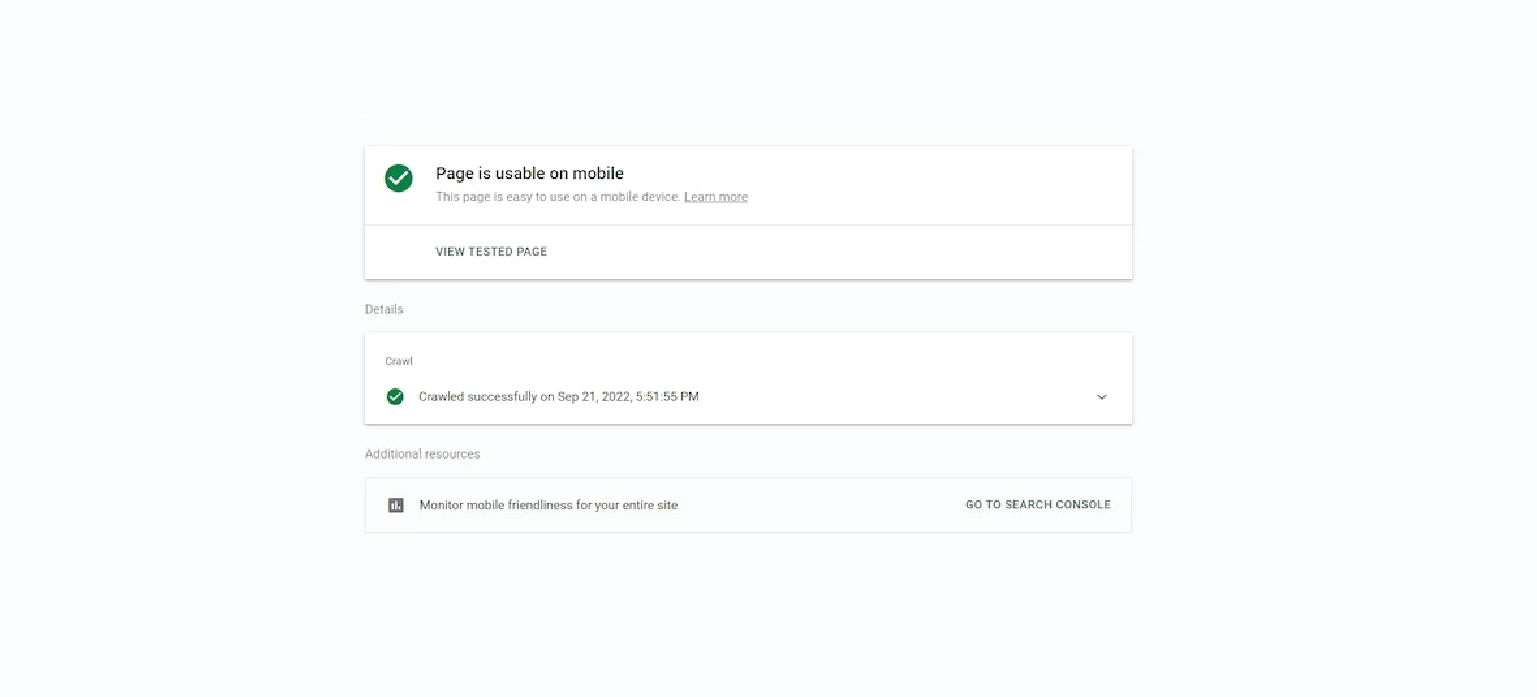
7. Social Media Usage to Interact with Customers
You have a fantastic opportunity to interact with the local market and communicate with customers directly through social media. However, maintaining your presence across several media is a difficult task.
To make things simpler, plan out your posts ahead of time and stay on top of trends by using a scheduling tool such as the Social Media Poster:
- Create surveys and queries on Twitter to solicit ideas from your clientele.
- Post bargains or happy hours on Facebook.
- Share pictures of your shop, services, and amiable employees on Instagram.
- Establish a Pinterest following if your company has a strong visual identity.
8. Local Link Building
Almost all link-building tactics that are effective for non-local websites can also be applied to local businesses such as locksmiths, pizza shops, and dentists.
Things improve:
Local companies have a lot of special backlink chances that non-local sites cannot take advantage of because they are closely associated with a particular city or state. The majority of local companies maintain connections with other companies in their community. At some point, you’ll undoubtedly need to do cold email outreach, but for now, I advise getting links from people you already know.
Thus, I advise listing each:
- Distributors/Providers
- Wholesaler, Contractor, Adjacent Enterprise that you are connected to in any way.
9. Consider a Blog (or an FAQ Page)
Four major ranking factors—experience, expertise, authoritativeness, and trustworthiness, or EEAT—are taken into consideration by Google when evaluating whether or not a website’s content will be helpful to a searcher.
You can really benefit in these areas by regularly producing material for your blog. A blog allows your company to regularly update your website with new, keyword-rich content while showcasing your authority and area of expertise. Additionally, writing about subjects you are intimately familiar with increases the experience component.
Furthermore, you can market your website using the material you’re producing for it. You can, for instance, publish links to your blog entries on your social media profiles, highlight your blog entries in a consistent newsletter, and produce longer-form downloadable content to gather contact details from website visitors, such as phone numbers and email addresses.
If your company already has a blog, make sure the content you write is keyword-focused (long-tail keyword research is useful in this regard!). If your company doesn’t currently have a blog, you may create one by researching potential keywords, using resources like Google Trends to discover what people are searching for, or even asking your clients what they might find interesting from you.
Even if you don’t think you have the time or resources to manage a company blog (which does require organization and time), you may still produce informative FAQ pages with lots of keywords. A FAQ page can help you rank higher in search results and attract more business by answering often asked questions about long-tail local keywords.
10. Optimize Meta Descriptions and Title Tags

You can begin optimizing for local searches as soon as you are certain that your website is in good condition and that your list of local keywords is robust. Optimizing the title tags and meta descriptions for each of your web pages is a crucial step in this process. The HTML code known as title tags displays the page title; this is also what appears in search engine results.
Your goal keyword and, depending on the page, your location should be included in your 50–60-character title tags. The HTML code that appears beneath a page’s title in search results is known as a meta description; it helps people understand what content to expect on the page before they click.
Your meta descriptions ought to be between 50 and 160 characters long, describing the content of the page and including your target keyword.

